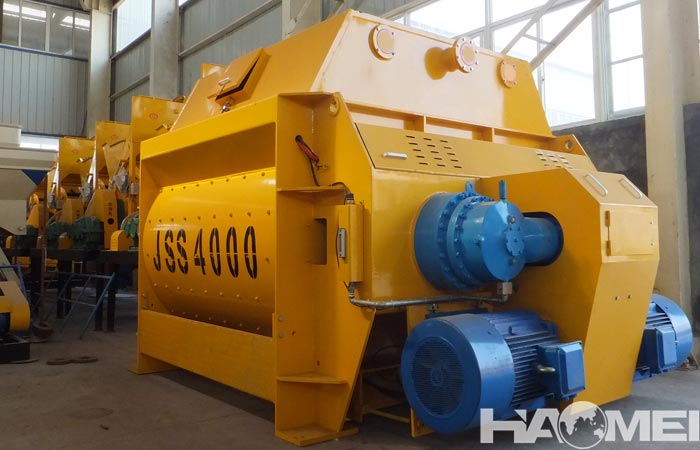Categories
- Case & News (50)
- Blog (565)
The composition of the concrete mixer parts mainly composed of the mixing cylinder, the transmission mechanism, the mixing mechanism and other auxiliary mechanisms. The mixing quality of the twin-shaft forced concrete mixer is very good. Compared with the traditional single-shaft concrete mixer, the mixing speed is greatly improved, the operation is simple, and the use is safe and reliable. The structure of the twin-shaft concrete mixer is not complicated.

1, Mixing barrel
The main mixing material of the twin-shaft concrete mixer is hard aggregate, and most of the concrete mixers are used in poor environments (compared to general mechanical equipment), so the barrel of the twin-shaft concrete mixer is relatively Made of wide and thick high-quality steel plate, the concrete mixer frame and support used have excellent equipment bending force, strong load-bearing capacity, and sufficient rigidity and toughness. The barrel is equipped with an observation window, a discharge door, a safety switch and various feeding excuses, which constitute the basic functions of the twin-shaft concrete mixer.
2, Transmission mechanism
Top-mounted stirring motor, military-grade planetary reducer, connected with a belt self-tensioning device, the main function is to achieve smooth transmission, low noise, no oil leakage and avoid abnormal equipment when the equipment is running damage.
3, Mixing mechanism
The mixing device of the twin-shaft concrete mixer parts is composed of a mixing main shaft, a mixing arm and a mixing blade, and an inner lining installed in the barrel wall, which plays a major mechanical role on the material. The working method of the twin-shaft concrete mixer is to reverse rotation of the two mixing spindles installed in parallel in the drum, and the mixing material is turned over, sheared, and mixed by the blades installed on the mixing spindle. The mixing arm adopts a streamlined design, and the installation angle can be selected from 90 degrees or 60 degrees. The staggered degrees of the double horizontal shafts can also be specially arranged. It mainly depends on the purpose of the concrete mixer and the planning of the model. Appropriate adjustments help the concrete mixer to achieve a better homogenous mixing effect.